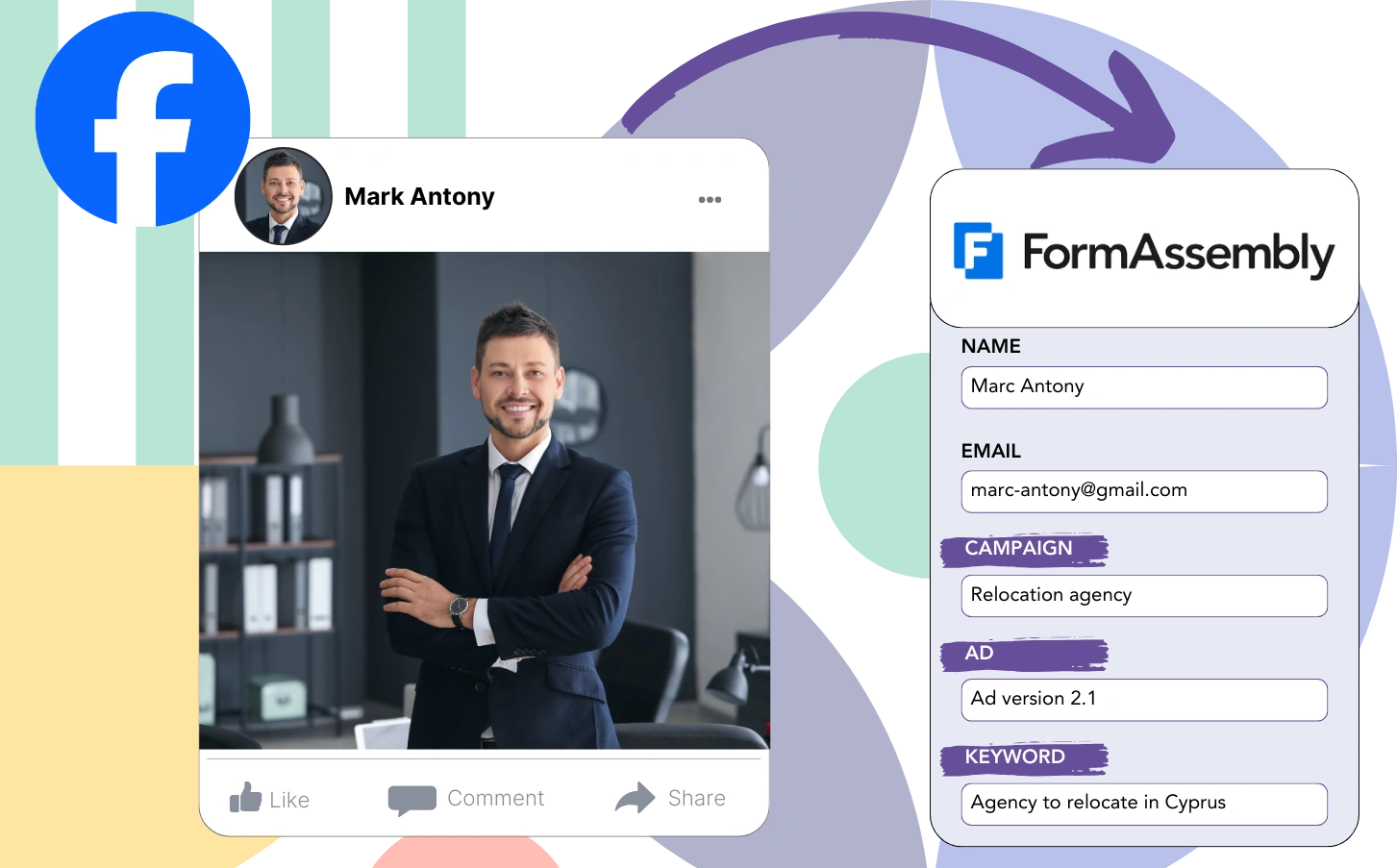Are you unsure about which Facebook ads are the key contributors to your leads, sales, and revenue?
You probably know the total number of leads produced by your Facebook ads, but identifying the specific source of each lead can be difficult.
Without this insight, you won’t be able to adjust your campaigns with confidence to achieve better results.
Leadsources resolves this problem.
Leadsources provides detailed lead-level insights for all your ads (campaign, Ad Set, audience, ad).
With FormAssembly, storing comprehensive data on Facebook ads, including campaign, Ad Set, audience, and ad for each lead, is straightforward.
Reports like “Audiences with the most successful lead generation” help you decide which to prioritize or eliminate.
Let’s dive into it!
Capture Facebook ads in FormAssembly
Step 1: Add Leadsources in the head tag of your website
Sign up to Leadsources.io, and benefit from our 14-day free trial.
You can place the Leadsources tracking code in the head section without the need of coding skills.
Simply follow this easy step-by-step guide.
Step 2: Add the UTM parameters to your Facebook ads campaigns
Apply the UTM parameters across all Facebook ad campaigns (campaign, ad set, audience, ad) to monitor performance.
For example, include these UTM parameters in the URLs of your Facebook ads:
- UTM_source
- UTM_campaign
- UTM_term
- UTM_content
Leadsources ensures that lead source data, including channel, landing page, and landing page subfolder, is captured even without UTM parameters, offering a complete picture of your leads.
Step 3: Add the hidden fields in FormAssembly
When someone submits the FormAssembly, Leadsources automatically inserts the Facebook ads data, including campaign, ad set, audience, and ad, into the hidden fields.
➡️ How to add hidden fields in FormAssembly
Facebook ads data is directly recorded into your FormAssembly by Leadsources (see Step 4 for more information).
Step 4: Capture the Facebook ads data in FormAssembly
When a visitor clicks on your Facebook ad and comes to your site, Leadsources collects data like campaign, ad set, audience, and ad.
Leadsources automatically integrates Facebook ads data into the hidden fields of your FormAssembly.
Submitting the form transfers Facebook ads data and responses to the FormAssembly submissions page for every lead generated.
How does Leadsources work?
By including the Leadsources tracking code in your site’s head tag, it collects Facebook ads data, such as campaign, ad set, audience, and ad, every time a visitor arrives on your website.
Once processed, the Facebook ads data is stored in your FormAssembly form’s hidden fields.
The visitor data that will be collected by Leadsources includes:
- Channel
- Source
- Campaign
- Content
- Term
- Landing page
- Landing page subfolder
You can still keep an eye on important lead source information even if UTM parameters are not present, for instance, from organic sources like:
- Google Search
- Instagram bio link
- Social media posts
- Etc.
Most tools only track lead data with UTM parameters, but Leadsources captures lead data even without these parameters.
Leadsources offers a complete view of lead data from all channels, which other tools might not provide:
- Organic Search
- Paid Search
- Organic Social
- Paid Social
- Referral
- Affiliate
- Display Advertising
- Direct Traffic
You can track and gather all your lead source data in a single area using this method.
Pro tip:
Track Facebook Ads data in all the popular online form builders, including Cognito Forms, Gravity Forms, Jotform, Typeform, WPForms, and more. For all other form builders, refer to our guide on How to track Facebook Ads data in your online form.
How to run performance reports
With the data from your Facebook ads saved in FormAssembly, you can prepare performance reports like:
- Leads per campaign
- Leads per Ad set
- Leads per audience
- Leads per ad
- Etc.
This tool helps you decide more effectively on how to allocate your Facebook ads budget.
Let’s see the different types of reports you can generate.
Lead performance reports
Generate reports to see the number of leads created by:
- Channel
- Campaign
- Ad set
- Audience
- Ad
- Landing page
- Landing page subfolder
Example #1
Data from SEO, PPC, and email campaigns can be used to generate a report named “Leads by Channel.”
Example #2
After identifying the top channel, such as Facebook ads, you can focus on it to see leads from each individual campaign.
Example #3
When discovering the top campaign for leads, you can explore which audience, ad set, or ad is driving the most leads.
Sales performance report
Knowing which ads and audiences generate the most leads is crucial, but do they also lead to increased revenue?
You can achieve detailed sales reports by importing your FormAssembly data into a CRM, such as GoHighLevel.
Example:
| Channels | Search Paid | Social Paid |
| Leads | 50 | 75 |
| Sales | 5 | 6 |
| Average order value | $150 | $100 |
| Revenue | $750 | $600 |
Your review of ad performance on Google and Facebook found that Social Paid ads generated a greater number of leads than Search Paid ads.
Analysis over several weeks revealed that the Search Paid channel generated more revenue with fewer leads compared to the Social Paid channel, leading to an increase in the Search Paid budget.
LeadSources tracks the source of each lead in FormAssembly, whether they come from ads, organic search, social, email, etc. and syncs that data with each submission. See the full breakdown on the lead source in FormAssembly page.
